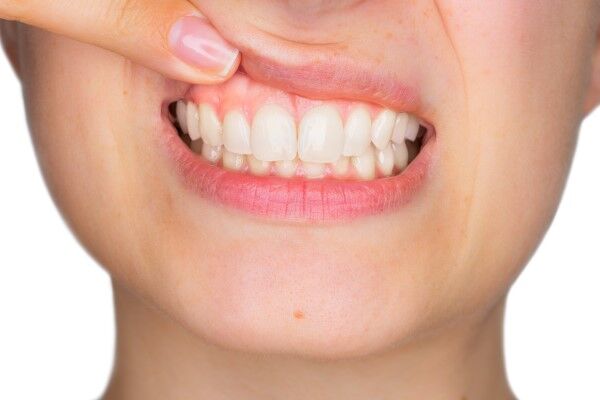Gum Surgery
The surgical procedures that aim at treating the gum and adjoining periodontal tissues or enhancing their cosmetic appearances are collectively known as Gum surgeries. The gum diseases such as chronic gingivitis and periodontitis may require surgical intervention.

Madhav Multispecialty Dental Clinic provides accurate intervention for all the gingival health issues. We have been successfully treating periodontal issues of our patients for a while now.
Gingivitis: This is a condition that causes inflammation of the gingiva. This can be due to the deposition of plaque and calculus or could be due to some drug intake.
The most common signs that you have gingivitis are:
- Swelling around the gums
- Bleeding while brushing or touching it
- Bad breath
Treatment options for gingivitis:
- Conservative approach: Scaling and polishing. Most of the cases are healed with this intervention.
- Surgical approach: At times the gingival is inflamed to an extent that only scaling is not a solution. In such cases the treatment options are :
- Gingivoplasty: This is a minor surgical procedure in which the gingiva is shaped. Usually done in minor gum correction.
- Gingivectomy: The overgrown gingival tissue is cut and shaped.
Periodontitis
It a more aggressive gum disease, the tooth starts losing the support of the adjoining gums. This happens when there is an inflammatory response that starts destroying the adjacent bones and tissues. The gums eventually start leaving the teeth, the teeth eventually loosen up and pocket formation starts in between the teeth and the gums.
Signs and symptoms of periodontitis:
- Frequent pus discharge from the gums
- Gum recession
- Tooth mobility
- Gaps created between teeth
- Inflammation in the gums
- Plaque and calculus
- Halitosis
What are the treatment options for periodontitis?
- Scaling and Root planing: Scaling and polishing helps the teeth surface to become smooth and hence attract fewer deposits in the future. Root planing is a procedure in which the exposed roots of the periodontally compromised teeth are smoothened.
- Deep curettage: More intensive than scaling. This is done when the periodontal problem has reached below the gum line. Here the gums are scraped and the granulation tissue is removed to enhance new tissue formation. The tooth surface is then polished.
- Flap surgery: The tissue flap is raised in the affected area. The tooth and the underlying bone are cleaned thoroughly and the flap is sutured back. The procedure is carried out under local anesthesia.
- Bone grafting: This is done when there is bone loss around the tooth. Bone graft is placed in the area of the defect. The bone graft integrates with the adjoining bone. A bone graft can be natural or synthetic.
- Soft tissue grafting: Soft tissue grafts are done for the correction of gum recession. Gum recession is a very common problem. Three types of soft tissue grafts can be used for the correction of soft tissue defects. They are :
- Connective tissue graft: The most commonly used graft. A flap is raised on the palate and the connective tissue is removed. After that, the graft is placed back again.
- Free gingival grafts: A small amount of tissue is removed from the palate and directly sutured at the site.
- Pedicle graft: When a person has rich tissues near the infected site then the graft is taken from the adjoining area and sutured without removing it completely. Only one edge of the graft is sutured.
- Guided tissue regeneration: A special membrane is placed between the tooth and the soft tissues around the tooth. The membrane acts as a barrier and allows the bone to regenerate without interference from the gums.
Cosmetic surgery:
- Gummy smile correction: Sometimes, people have a huge gingival coverage over their teeth. This makes the teeth appear smaller and the gums are highly visible while smiling. This could be corrected with the help of the contouring of the gingiva.
- Surgical crown lengthening: Some teeth have a shorter crown due to attrition, fracture, or decay. Such teeth can be treated and their clinical crown length can be increased with the help of surgical crown lengthening. In this, the surrounding gingival is trimmed and the underlying bone is contoured to give adequate length to the crown.
What is post-operative care after gum surgery?
After a gum surgery, a patient can experience Pain,Swelling,Sensitivity to hot and cold food
Instructions for a patient after a gum surgery
- Do not spit for 24 hours after the surgery
- Avoid hard and hit food for a few days
- Cold fermentation from outside to reduce the incidence of swelling
- Take your medication on time
- Avoid alcohol or smoking
- Maintain good oral hygiene with the help of mouthwash
- Avoid spicy food for a few days
- Visit your doctor for recalls and sutures removal if any.
- Inform immediately if you have uncontrolled bleeding or excruciating pain after the surgery.
We at Madhav Multispecialty Dental Clinic maintain strict sterilization protocols during all our surgical procedures. We follow all the norms to perform the procedure. A patient is assessed well clinically and radiographically and then the treatment is planned.
Dr. Ritika Wadhwani has done an advanced clinical course on managing periodontal surgeries. She performs all the gum surgeries with ease and provides a painless experience to the patient.
If you have any gingival or periodontal issues, then you should visit us soon.
